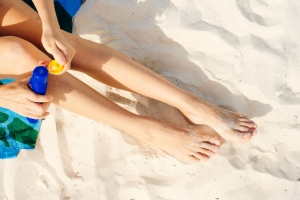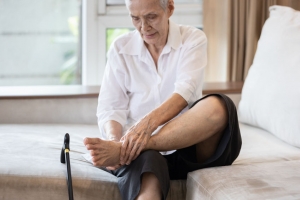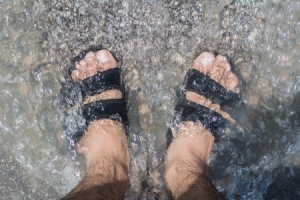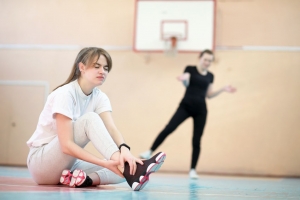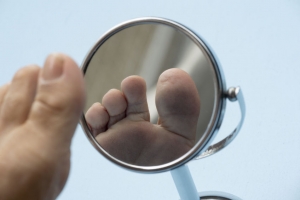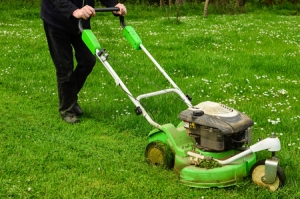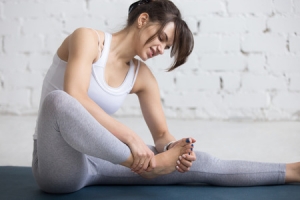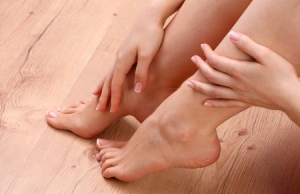Connect With Us
Blogs
Take Steps to Prevent Skin Cancer This Summer
At Superior Foot & Ankle Care Center we know that our Los Angeles County patients enjoy the sun nearly year-round, but May is Skin Cancer Awareness Month and a good time to emphasize the importance of protecting your skin from the harmful effects of UV rays.
Research shows that currently one in five people will develop some form of skin cancer by the age of 70. In fact, there are more cases of skin cancer diagnosed each year than all other cancers combined. But skin cancer is also highly treatable and has a very high rate of survival when detected early. Below are steps you can take to lower your risk for this potentially deadly disease.
Be on the Lookout—one big advantage of skin cancer over other carcinomas is that you can see it. Commit to inspecting the skin on your feet and the rest of your body monthly. The Skin Cancer Foundation suggests that you lookout for:
- New—blemishes, freckles or moles that have appeared that weren’t present before
- Changing—growing larger, losing their borders, becoming mottled or containing new colors could all signal a potential cancer
- Unusual—any mark on your skin that bleeds, crusts over or is itchy or sore for more than three weeks
When it comes to your feet, be sure to look at the tops and the soles of your feet and between each toe. Look for spots on your nails or in the skin under the nail as well. If you see anything you’re concerned about, contact our Long Beach office at (562) 420-9800 to schedule an appointment with our podiatrists, Dr. Victoria M. Foley and Dr. Constance Ornelas, promptly.
Take Cover—seek shade during the hottest hours of 10 a.m. – 4 p.m. If you spend a large amount of time in the sun or are extra fair, freckled or have other issues that increase your risk for skin cancer consider shirts, hats and other clothing made with UPF (ultraviolet protection factor).
Be Generous with the Sunscreen—many patients often skip their feet when applying sunscreen but it’s just as essential there as any exposed skin. And not just when you are at the beach or pool. If you’re wearing open sandals for a day of shopping or running errands be sure to apply a broad-spectrum sunscreen with an SPF of 15 or higher about 30 minutes before going out. If you’re playing sports or swimming, choose a water-resistant variety and reapply after coming out of the water or every two hours.
Say No to Tanning Beds—these increase your risk for all types of skin cancer including dangerous melanomas by up to 75%. Even one time can increase your risk. Don’t let teens use tanning beds ever.
You can decrease your risk of skin cancer. If you have any questions about this disease and your feet, don’t hesitate to contact us.
5 Foot Care Tips for Seniors
Did you know that the average person walks between 2.5 and 5 miles a day? At Superior Foot & Ankle Care Center we know that means our Los Angeles County senior patients have likely put quite a few miles on their feet. In honor of Older Americans Month 2021, we’d like to offer some tips for protecting podiatric health as you age.
- Listen to your feet. Foot pain, shoes that don’t seem to fit properly anymore, and fatigue in your legs or feet are all ways that your feet communicate that something isn’t right. Don’t put off seeking an evaluation of these symptoms. Contact our Long Beach office at (562) 420-9800 to schedule an appointment with our podiatrists, Victoria M. Foley and Dr. Constance Ornelas.
- Keep feet clean and dry. Wash daily with soap and water and dry thoroughly (paying particular attention to the spaces between your toes). If you tend to sweat excessively, keep an extra pair of socks with you and change when you notice your feet feel damp. This will go a long way in preventing fungal infections like athlete’s foot and toenail fungus.
- Check your feet daily. Look over your entire foot (or ask someone to do it for you) for any unusual changes. Toenail or skin discoloration, bumps, bruises and swelling may all indicate a developing foot or even systemic problem. Diseases such as diabetes, hypertension and arthritis often first manifest in the feet.
- Choose shoes wisely. Your footwear is one of the biggest predictors of podiatric health. Look for styles that have good arch support and heel and insole cushioning. Treads should be non-slip but not have rubber over the toes which can lead to tripping. Ask the podiatrist for recommendations of shoe styles if you have a deformity such as a bunion or hammertoe. Lastly, get your feet professionally measured to ensure a proper fit and always try on both shoes before purchasing.
- Reduce fall risk. Falls are the number one cause of both fatal and non-fatal injuries in seniors. Safeguard your home by installing additional stair rails and lighting. Remove throw rugs, plant stands, electrical cords that are across walking areas, and other clutter to lower your chances of falling.
Your podiatrist is your partner in making sure your feet continue to be healthy and enable you to keep on living the active life you love. If you have any questions or concerns, don’t hesitate to contact us.
Building Stronger Bones
At Superior Foot & Ankle Care Center we want our Los Angeles County patients to understand the importance of strong bones for your feet and ankles. There are 26 bones in each of your feet and these bones have the important job of supporting and carrying the rest of your body. May is National Osteoporosis Month and a good opportunity for us to share some information on ways you can improve bone strength.
Partner with Your Podiatrist— Our podiatrists, Dr. Victoria M. Foley and Dr. Constance Ornelas, will help you assess your risk for osteoporosis. The foot doctor will want to know if you have a family history of osteoporosis or have had any fractures in the past. She will also ask questions about your lifestyle to help get a more complete picture of your risk for this disease. Together, you can formulate a plan to help prevent osteoporosis. It may include some or all of the following areas.
Ensure Enough Calcium and Vitamin D in Your Diet—These are the critical nutrient building blocks for strong bones. The best-known source of calcium is dairy products like milk, yogurt, and cheese. But you can also get a fair amount of calcium from leafy greens, canned sardines and salmon and certain other foods. There are also supplements as well as cereals, juices, and breads that are fortified with calcium and vitamin D.
Exercise Regularly—It’s important to have both weight-bearing and muscle-strengthening exercise as part of your fitness routine. Consider adding some exercise designed to increase balance too as this will help prevent falls which can result in fractures. If your exercise regimen has become stale, consider trying a new activity like dancing, tennis, or hiking. Join a gym, take a class or team up with a buddy and commit to a weekly fitness plan.
Make Healthy Lifestyle Choices—Several habits impact bone strength that you may not immediately identify. Smoking, excessive use of alcohol, not eating enough fruits and vegetables and being overweight can all contribute to bone weakness.
If you have concerns about the health of your bones and your feet, contact our Long Beach office at (562) 420-9800 today.
7 Ways To Prevent Fungal Foot Infections
A common problem that we at Superior Foot & Ankle Care Center treat in our Los Angeles County patients is fungal infections. Conditions such as athlete’s foot and toenail fungus are very uncomfortable and can easily spread to other parts of the body as well as other people. Most fungal infections are spread by direct contact. That means there are several precautions you can take to greatly reduce your risk. Below are seven tips to help you avoid fungal infections.
- Keep your feet covered in public places. Gyms, community pools, nail salons, and seaside restrooms and changing areas all see a heavy amount of barefoot traffic. Wearing flip flops or shower shoes will prevent your feet from coming in contact with surfaces where the fungi have been deposited.
- Wash your feet daily and dry completely. This simple act will go a long way to keeping fungal and other infections away. Take extra care to dry between your toes as this is where athlete’s foot most often starts.
- Make sure socks stay dry. Fungi love dark, moist places—that’s why the inside of your socks and shoes are the perfect breeding ground. If your feet tend to perspire profusely, keep an extra pair of socks with you and change as soon as you notice your feet feel damp.
- Use foot powder. A dusting of an anti-fungal or talcum powder will aid in keeping feet dry throughout the day.
- Don’t share items that touch another person’s feet. Socks, shoes, nail files, clippers, and even towels can be a vehicle to pass on a fungal infection.
- Choose shoes made of breathable materials. This will allow for air circulation around your feet and reduce the amount of moisture trapped in your shoes.
- Alternate your shoes. It’s helpful to allow shoes to air out for a day or two between wearings.
If you are experiencing red, itchy, flaky skin on your feet or nails that are discolored, thickened, and crumbly it’s important that you schedule an appointment at our Long Beach office at (562) 420-9800. Our podiatrists, Dr. Victoria M. Foley and Dr. Constance Ornelas, will examine your feet and prescribe the correct treatment if you have a fungal infection.
Taking Care of the Feet of Young Athletes
At Superior Foot & Ankle Care Center we know that our Los Angeles County patients have suffered through the pandemic shutdowns. One of the most affected are our young patients. As restrictions ease, children are overjoyed to be able to get back to sports, but parents need to be vigilant about potential foot problems. After an especially long period of inactivity, young feet are more likely to experience foot pain and are vulnerable to some common podiatric disorders. Here’s how parents can help:
Update Sports Shoe
The single biggest factor in podiatric health, even in young children, is shoe choice. With fast-growing feet, chances are your child will need new athletic shoes for the sport they plan to participate in. Shop for shoes that are designed specifically to accommodate their chosen sport. Basketball sneakers, for example, offer extra ankle support while running shoes have more cushioning to absorb the stress of repetitive pounding. Fit is just as important as style. Be sure to:
- Have both of your children’s feet professionally measured
- Shop for shoes at the end of the day after children have been active—that’s when their feet will be at their largest
- Bring or have your child wear the socks he or she will use with their athletic shoes to ensure a more accurate fit
- Try on both shoes and have your child walk around the store long enough to determine they are comfortable
Look for Signs of Foot Pain
In many instances, young children are not able to articulate foot pain. However, parents may notice unusual behaviors that can signal hurting feet. These include:
- Lack of interest in sports or fitness activities they previously enjoyed
- Lagging behind peers in casual backyard play
- Complaints that feet feel “tired”
- Limping, walking on tip toe or other strange gaits
If your child exhibits any of the above symptoms or complains of foot pain, make an appointment at our Long Beach office at (562) 420-9800. Our podiatrists, Dr. Victoria M. Foley and Dr. Constance Ornelas, will examine your child’s feet and get to the source of foot pain so that they can be properly treated and back in the game in no time.
April is National Foot Health Awareness Month
Feet are often taken for granted and not given much attention, but in April we celebrate National Foot Health Awareness Month. At Superior Foot & Ankle Care Center, we want to take this opportunity to share with our Los Angeles county patients some simple steps you can take to protect the health of your feet and avoid many common podiatric disorders.
- Inspect your feet regularly. When is the last time you really looked at your feet? Changes in skin color or the condition of your toenails, unexplained bruising, lumps, and cuts that don’t heal are all potential signs of a foot problem. Many deformities like bunions and hammertoes also occur gradually. The majority of podiatric disorders can be more easily and better treated in their early stages. If you spot anything concerning, contact our Long Beach office at (562) 420-9800 and make an appointment with our podiatrists, Victoria M. Foley and Dr. Constance Ornelas, so that they can examine your feet and determine if there is an issue that needs to be addressed.
- Make smart shoe choices. One of the most important determining factors for the health of your feet is what you put on them. Proper fit is essential. Don’t wear shoes that feel tight or squeeze your toes together. Look for styles with roomy toe boxes, good arch support, and a firm fit around the heel. Avoid spending too much time in heels over two inches high.
- Practice good hygiene. Wash feet daily. Dust with anti-fungal or talcum powder if your feet tend to sweat excessively and moisturize at night with a good moisturizer.
- Engage in a healthy lifestyle. We sometimes forget that what we do with the rest of our body most definitely impacts the health of our feet. High cholesterol, for example, can lead to poor circulation which diminishes the ability of oxygen and nutrients needed for healing to reach your feet in a timely manner. Eating a nutritious diet, maintaining a healthy weight, not smoking, and exercising regularly will all benefit your feet as well.
If you have questions about how to best take care of your feet and ankles, contact us today.
Get Mowing—Safely
Each year nearly 85,000 people take a trip to the emergency room because of an injury sustained from a power mower, and a large number of these are to the feet and ankles. Sadly, a large percentage of these injuries occur in children. At Superior Foot & Ankle Care Center we want to help our Los Angeles County patients avoid contributing to these statistics. Below are some important reminders for using power mowers safely.
Avoid Mechanical Difficulties—many mowers today have several built-in safety features. Know and care for your mower properly:
- Read the user manual! It may not be the most scintillating read, but it can protect your feet and the rest of your body by helping you understand how to properly operate your mower.
- Perform recommended annual maintenance on your mower or have it serviced professionally.
- Do not try to “modify” or fix your mower, even temporarily with homemade repair jobs.
Child Proof Your Mow—to help protect the youngest members of the family:
- Never take children for rides on the mower. Tragically, getting on and off mowers are prime danger zones for small feet and toes.
- Keep children indoors while you mow if possible.
- If children are outside, instruct them not to try to get your attention or approach you when the mower is on.
- Teach children not to climb on or touch a mower when it is off. Many children have been burned by mowers that are cooling down or cut themselves on the sharp blades.
Follow Safe Mower Practices—although many mowing safeguards may be common sense, they bear repeating:
- Don’t mow a wet lawn. Slippery grass makes it easy to lose control of the mower.
- Wear sturdy shoes. It may be hard to believe, but many injuries that land people in the emergency room happen to those who are mowing barefoot or in flip-flops. Mower blades whirl at over 3,000 rotations per minute—choose the most protective shoes you own.
- Pick up the lawn before you mow. Mowers have the kinetic energy of a .357 handgun and when they run over objects in the lawn they can shoot out at high speed and hurt someone nearby.
Any mower injury needs immediate treatment. If it is serious, contact our Long Beach office at (562) 420-9800 and let our podiatrists, Dr. Victoria M. Foley and Dr. Constance Ornelas, assess the condition of your foot or ankle.
Dealing with Chronic Ankle Pain
You haven’t sprained your ankle—at least not recently—but it hurts and is stiff and swollen at times. This is a complaint we at Superior Foot & Ankle Care Center sometimes hear from our Los Angeles county patients. When an ankle sprain occurs, our podiatrists, Dr. Victoria M. Foley and Dr. Constance Ornelas always stress the importance of prompt and complete rehabilitation. Many chronic ankle issues stem from a previous injury. Below are two types of chronic ankle trouble and what to do about them.
Chronic Lateral Ankle Pain
The characteristic symptom of chronic lateral ankle pain is pain along the outside of the ankle. You may also experience discomfort in your leg along with stiffness, swelling, and tenderness in the ankle. Many patients also report that their ankle feels like it is unstable or going to “give way” especially when walking on surfaces that are not level or when wearing heels. Although the most common cause of chronic lateral pain is a past sprain or injury, there are other possible sources, including:
- Fractures in the ankle joint bones
- Arthritis or inflammation in the joint, joint lining or tendons
- Nerve damage
- Scar tissue
Treatment Options: The treatment for chronic lateral ankle pain will depend on the source. If the podiatrist finds a break in a bone, it may be necessary to immobilize the ankle to allow the bone to heal. Other possible treatments include:
- Anti-inflammatory medications or a prescription steroid
- Physical therapy
- Ankle brace or another type of support
Osteochondritis
The symptoms of osteochondritis often mimic those of an ankle sprain: pain, stiffness, and swelling in the ankle joint. You may also find it difficult to bear weight on the ankle. This condition can affect people at any age and is almost always due to a previous sprain that may have caused lesions or a stress fracture on the surface of the joint.
Treatment Options: The foot doctor will first want to x-ray the ankle that’s bothering you to check for fractures or other injuries. This can be done right in our Long Beach office. At a minimum, the ankle will likely have to be immobilized to rest the joint and allow it to heal. In severe cases, surgery may be necessary to remove bone fragments or cartilage, stimulate new blood vessels, and promote scar tissue.
If you are experiencing ongoing ankle pain or stiffness, contact our Long Beach office at (562) 420-9800 to schedule an appointment.
Foot Problems Caused by Staying at Home
At Superior Foot & Ankle Care we’ve seen an increase in foot pain among our Los Angeles County patients in recent months. For many, this is the result of the shutdown due to the pandemic. Many people have had their normal fitness routine interrupted. In addition, a simple at-home habit has had a surprising consequence. Going barefoot or wearing slippers or flip-flops around the house may be normal after work—but what about when you don’t leave the house to go to work? The increased amount of time in this type of footwear leads to several common conditions including:
- Flat feet
- Heel pain and plantar fasciitis
- Arch pain
Re-Entering an Active Lifestyle
As you begin to get back to your normal routine there are some steps you can take to help ease the transition and reduce foot discomfort.
- Wear good quality, supportive shoes, even when home. The trouble with going barefoot is that the arch of the foot is not supported. As your arch flattens, it puts strain on the plantar fascia (the long band of tissue that stretches across the bottom of your foot). This can cause both arch and heel pain. A cushioned insole is also helpful in preventing podiatric pain.
- Change positions frequently. Working from home means you’re not even walking to the car or going out at lunch. Be sure to get up at least once an hour if you’re sitting at a desk or try standing to work if you can find a counter that is the correct height. Stretch and rotate your feet and wiggle your toes throughout the day to stay flexible and keep up good circulation.
- Gradually increase activity. While it may be tempting to jump into an exercise program at full speed, it’s better to start slowly. You’re more prone to injuries if you try to push your body too far too fast after a period of being inactive. Walking is a great way to re-enter a more active lifestyle. Try fitting in a walk during lunch or at the end of the workday.
If you’re experiencing foot pain that you can’t explain or you start to have uncomfortable symptoms in your feet or ankles as you become more active, contact our Long Beach office at (562) 420-9800 and schedule an appointment with our podiatrists, Dr. Victoria M. Foley and Dr. Constance Ornelas.
Focus on Female Foot Health
March is Women’s History Month. At Superior Foot & Ankle Center we thought we’d help celebrate our Los Angeles County women by providing tips on taking good care of their feet.
Bunion Prevention
Although men can also get bunions, it is a deformity that plagues women more frequently and this is due in part to shoes. High heels that force the foot forward exerting excess pressure on the toes and styles with narrow, pointy toe boxes are a contributing factor in the development and progression of bunions. In some cases, the tendency for the toe joint to move out of place is genetic. There are exercises that can be done to strengthen toes and feet and help prevent bunions. The podiatrist may also recommend a custom orthotic device to realign the foot properly and relieve pressure on the toes. If you notice your toe moving out of place, even slightly, it’s important that you make an appointment at our Long Beach office by calling (562) 420-9800. The earlier our podiatrists, Dr. Victoria M. Foley and Dr. Constance Ornelas, are able to diagnose a bunion the greater chances of being able to slow its progression.
Importance of Good Footwear
Well-made footwear for women is important for other reasons beyond bunion prevention. It’s essential that your shoes have good arch support (often lacking in fashion boots and some other styles) in order to avoid heel pain. On average, women walk 3 miles more a day than men, and a cushioned insole can greatly increase comfort. A less positive statistic: it’s estimated that up to 90% of women are wearing shoes that are too small for their feet. Get your feet professionally measured when buying new shoes and understand that your foot size can change over time.
As You Age
It’s natural as you get older for your feet so show some signs of “wear and tear.” However, that does not mean that foot pain is “normal” as a senior. Fat pads on the soles and heels may deteriorate requiring you to add some gel or other padding to your shoes. Be on the lookout for stiffness in joints that may signal arthritis. It’s important to maintain a regular exercise routine and not to sit with your legs crossed for long periods of time to encourage good circulation. You may also notice symptoms in your feet that point to other, more serious systemic conditions such as diabetes or arterial disease. Alert your podiatrist to unusual symptoms such as loss of hair on your legs or toes, cold feet, or decreased sensation in your feet.
Healthy feet help successful women get where they want to go! If you have questions or concerns about your feet, don’t hesitate to contact us.
